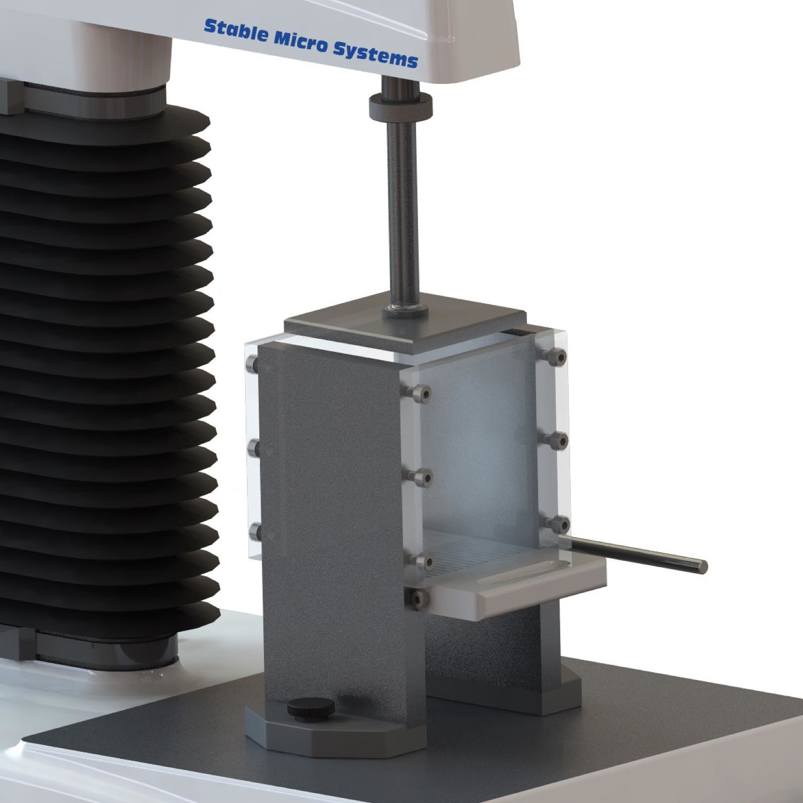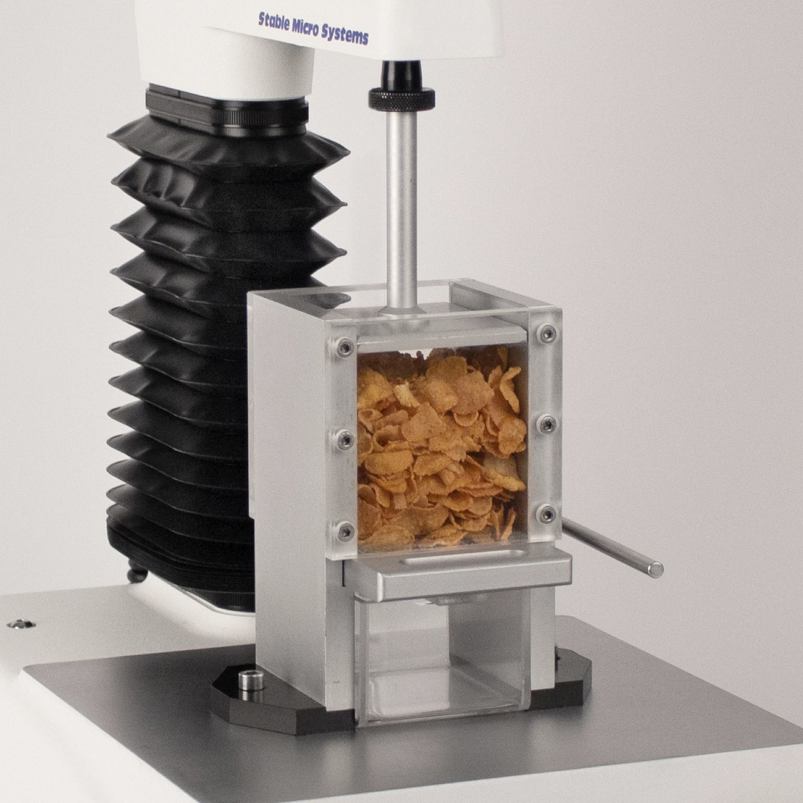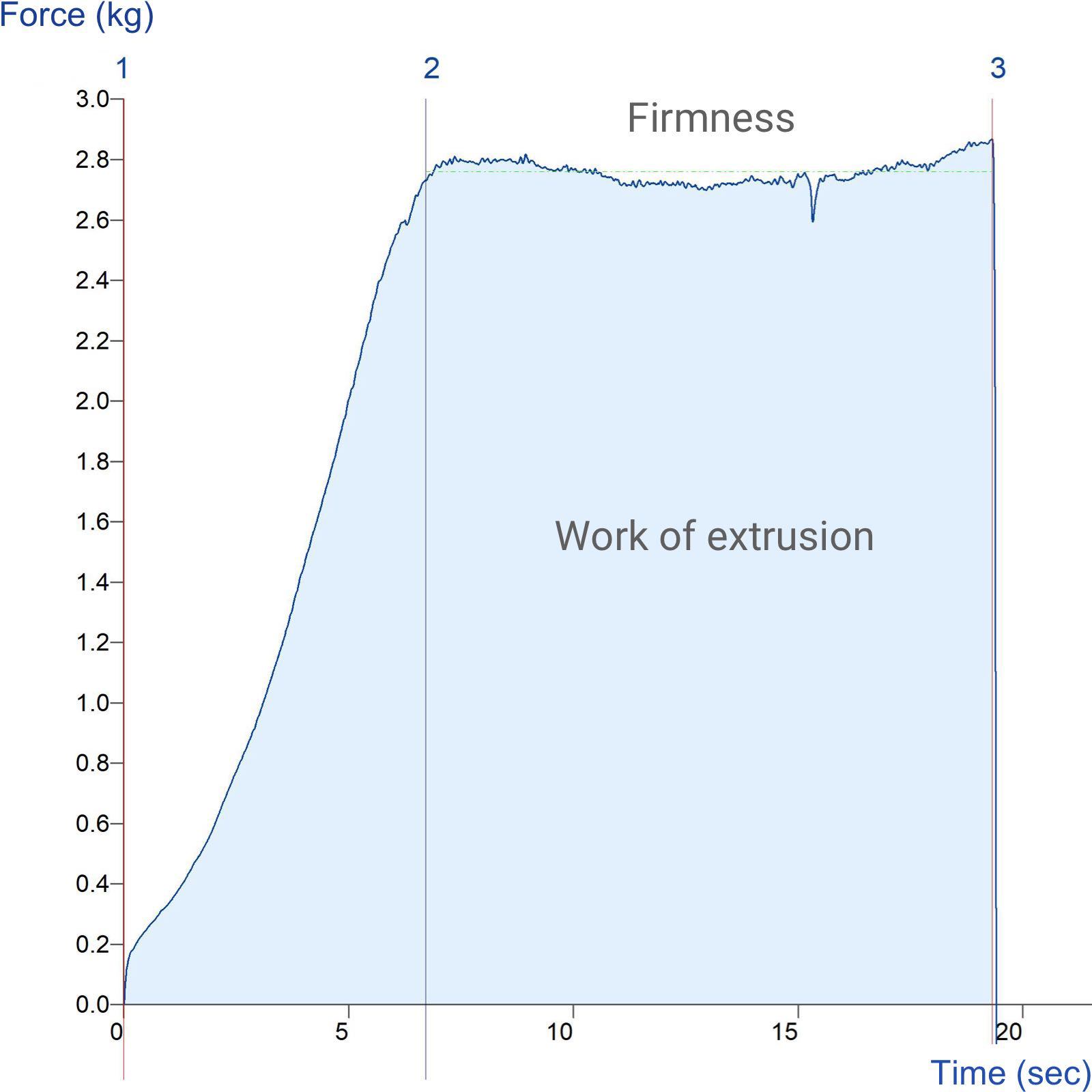Product overview
Empirical methods of assessing texture are often challenged by lack of homogeneity or uniformity in samples – such a challenge which is almost impossible to approach with fundamental methods. Heterogeneous systems have structural elements that can vary considerably for the same overall chemical composition depending upon how they were created.
Sometimes the sample to be analysed may be of variable configuration or structure from piece to piece. In the case of fruit testing, for example, whilst the preferred method of testing might be compression, the inherent variability of natural products and the range of sizes of fruit from piece to piece may preclude the option of testing the pieces one at a time. For the chance of obtaining repeatable results when testing by compression testing demands that the dimensions of the test piece are constant. To do this, sample cylinders or cubes therefore need to be prepared which may be impractical in terms of time available or impossible. A small change in sample size has an immediate effect on surface area for testing which would obviously affect the magnitude of the force to be measured, and thereby affect the repeatability.
This challenge calls for a test where samples are measured ‘in bulk’ which deals with the compromise of sample heterogeneity. By testing a larger number of pieces, or a wider surface area with more testing surfaces, an averaging effect is thereby created which is the result of a representative weight or number of pieces. A convenient physical test is to compress a population of pieces constrained within a container such as the Ottawa Cell which attaches to a Texture Analyser and is comprised of a square section test cell and loose fitting plunger. Test samples are typically compressed against a chosen extrusion plate located in the base of the cell. Plates feature holes, wire, blades or bars, to suit the sample.
The result is an average of the forces required to compress or extrude the sample of variable geometry. The maximum force and area under the curve are usually recorded for all of these types of test and taken as an indication of bulk firmness. The area under the curve is usually termed the 'work of compression' – a larger value indicating a firmer sample.
The ejecting handle allows easy removal of plates. A Watertight Base (A/BWB) and Liquid Catchment Tray (A/LCT) expands the range of products which may be tested using this attachment, such as ‘bowl life’ assessment of breakfast cereals.
Force can be reduced in this test type by the alternative employment of a Miniature Kramer/Ottawa Cell (HDP/MKO5).
How does the Ottawa Cell work?
Ideal sample form
Multi particulate materials or a certain weight or volume of material that needs to be tested in 'bulk' in order to test a representative sample that cannot otherwise be tested successfully (i.e.repeatably) as individual pieces or in smaller volume.
Benefits and limitations
- Samples which have variable size and shape produce very variable results when tested individually. A 'bulk' test (testing of a certain number or weight of sample) takes away this variability, e.g. breakfast cereals, raspberries.
- Usually best to use a 'Button' trigger for comparison.
- The Ottawa Cell must be operated with an extrusion plate.
Optional extras
The Ottawa Cell cannot be used without the insertion of an extrusion plate. The following are available:
3mm Ø Bars Extrusion Plate – A/BAR
6.5mm Ø Holed Extrusion Plate – A/HOL
17 Bladed Extrusion Plate – A/TBL
8 Bladed Extrusion Plate – A/WBL
Wire Extrusion Plate – A/WIR
The following are also available for use with the Ottawa Cell:
Watertight Base – A/BWB
Product Catchment Drawer – A/CAT
Liquid Catchment Tray – A/LCT
Circular Insert and Plunger – A/CIP
Square Insert and plunger – A/SIP
Technical information
Installation
Full installation instructions are provided within the Education Zone of the latest Exponent/Connect software version and on the technical information sheet accompanying this product.
Chemical compatibility
Stable Micro Systems probes and attachments are commonly made from four materials: anodised aluminium (AA6082 T6), stainless steel (316 T), Delrin (acetyl copolymer) and Perspex (polycarbonate).
In general use, probes and attachments made from these materials will be suitable for testing food products and inert non-food materials.
The four materials listed above are not universally resistant to all types of chemicals and as such the compatibility of the probe/attachment material with the product (to be tested) must be established to prevent damage to the probes and attachments. If the compatibility of the product with the probe is unknown to the customer then the chemical information about the product (Material Safety Data Sheet or Product Data Sheet) should be submitted to Stable Micro Systems. Stable Micro Systems will then assess the suitability of the probe/attachment material for use with the product and advise accordingly. If this advice is not sought then Stable Micro Systems will not accept liability for probes/attachments damaged by chemical attack from the product being tested.
Cleaning and maintenance
All probes and attachments may be cleaned in warm (or hand hot) water using a mild detergent. A soft brush may be used but abrasive cleaning aids should be avoided. Stable Micro Systems products should not be microwaved or cleaned in a dishwasher.
Screw threads should be lightly lubricated after drying using a light lubricant, e.g. petroleum jelly, mineral oil. This will aid the fitting and unscrewing of the item. Each component of a probe or attachment should be wrapped separately when stored, to avoid scratching or chipping. This will safeguard against any unnecessary damage to the accessory.
Troubleshooting
The Extrusion Plate is often pushed in too far. Additionally, a misaligned plunger can cause friction with the cell walls. Check this by performing a ‘Blank’ test using a Button Trigger.



